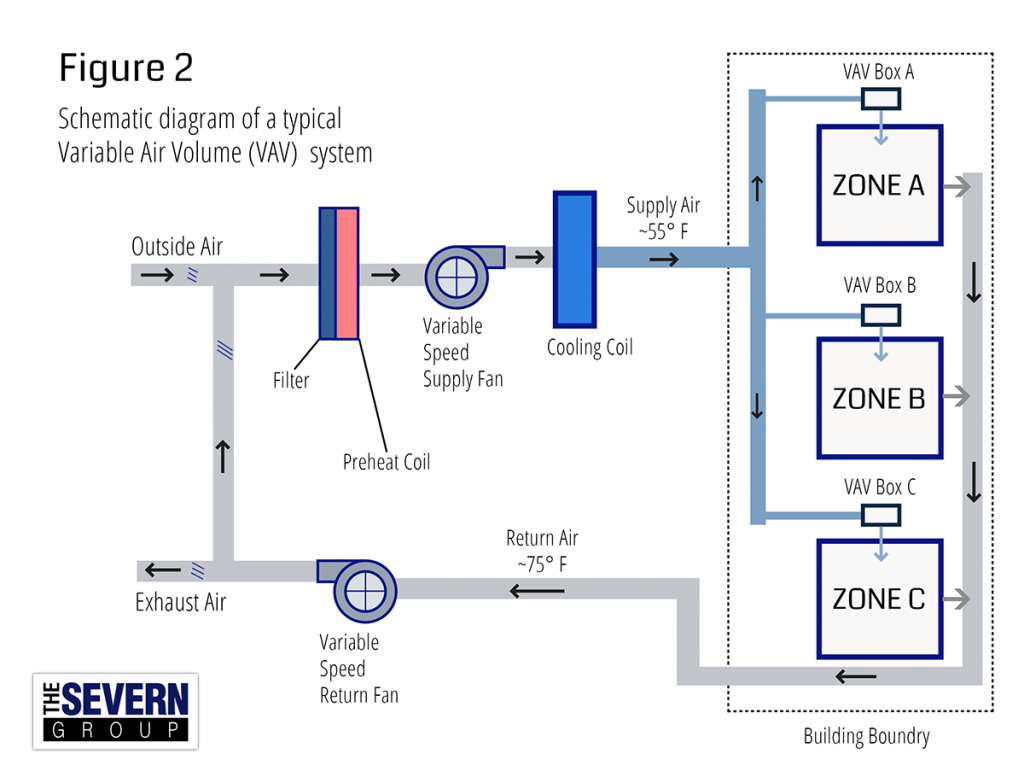CAV vs VAV HVAC Systems
Twenty to thirty years ago it was common practice to install a CAV (constant air volume) system in commercial buildings for ventilation and air-conditioning. These types of HVAC systems require high airflow rates and higher amounts of energy for heating and cooling. Thus, increasing utility costs. Therefore, the theory is, that you will achieve considerable energy savings by installing a VAV (variable air volume) system. However, the change is effective only if the entire system is adapted. So, let’s compare CAV vs VAV HVAC systems.
CAV System
- A CAV unit operates the fan and compressor at full capacity until the temperature drops to a specified setting, then the compressor turns off. The on/off cycling is not efficient at keeping the space at a constant temperature.
- CAV systems are small and serve a single thermal zone. However, variations such as CAV with reheat, CAV multizone, and CAV primary-secondary systems have the ability to serve multiple zones and larger buildings.
- There are two types of CAV systems commonly used: the terminal reheat system and the mixed air system.
- The terminal reheat system cools the air in the air handling unit down within its zone of spaces. While it cools the air, it is inefficient and costly.
- The mixed air system has two air streams. One for the coldest and one for the hottest needed air temperature in the zone. The two air streams are strategically combined to offset the space’s load. It works well to cool the air. However, it does not control humidity.
VAV Systems
- VAV Sytems were developed to meet the varying heating and cooling needs of different building zones. For example, a zone can be either a single room or a cluster of rooms all sharing the same heat gain, and heat loss characteristics.
- The system is efficient at dehumidifying the space.
- Also available in a multiple-zone system.
- The VAV (variable air volume) system is one of the most energy efficient ways for building air-handling system.
- Offers more precise temperature control as the fan speed varies depending on the temperature in the space. The compressor regulates the refrigerant flow to maintain a constant air temperature.
- The HVAC industry regards pressure independent VAV systems as the best HVAC system design available. This is a result of improvements in the terminal unit.
So, you might be wondering, what is the biggest difference between CVA vs VAV HVAC systems? Savings. You can save as much as 30 percent in energy costs with a VAV System. In addition, VAV systems are economical to install and to operate. If you have any questions about what type of system your building currently uses, or are interested in converting your old CAV system to a VAV system, contact The Severn Group. We can help you save money today!


